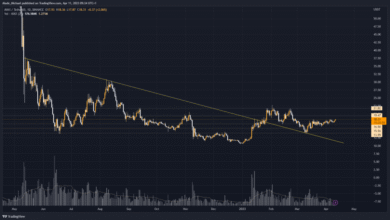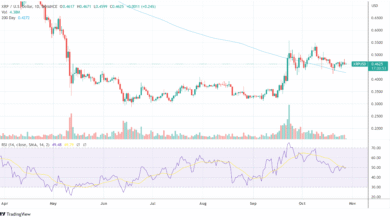Bitcoin Investment Strategy: Analyzing STRF Security Risks

In the ever-evolving world of digital currencies, adopting a robust Bitcoin investment strategy is crucial for both novice and seasoned investors alike. With Bitcoin often hailed as ‘digital gold’, it presents a unique opportunity for those looking to diversify their portfolios amidst traditional financial landscapes. Notably, influential figures like Michael Saylor are pioneering strategic investments to capitalize on Bitcoin’s potential, such as the recent introduction of STRF securities, which promise lucrative dividend payments. This innovative approach aims to bridge the gap between cryptocurrency and traditional investment, drawing attention from various sectors. As crypto investments grow increasingly popular, understanding the intricacies of these new financial instruments can empower investors to make informed decisions in this volatile market.
Navigating the complexities of cryptocurrency investments has never been more essential. Investors are turning to bitcoin strategies that incorporate elements of traditional finance while leveraging the unique attributes of blockchain technology. Key players, such as Michael Saylor, are leading initiatives that aim to enhance investment returns, showcasing options like STRF securities that offer dividend payouts reminiscent of bonds. As bitcoin continues to be perceived as a hedge against inflation and a component of diversified portfolios, exploring these innovative financial products becomes paramount. With the potential for significant yield through strategic investments in digital assets, understanding this new landscape is critical for optimizing long-term financial goals.
Understanding Michael Saylor’s Bitcoin Vision
Michael Saylor, the founder of Strategy, is renowned for his unwavering conviction in Bitcoin as the quintessential store of value, often referred to as ‘digital gold.’ Saylor believes that Bitcoin will unlock an unprecedented level of financial freedom and security for investors. His strategy involves accumulating vast reserves of Bitcoin, which he sees as a hedge against inflation and currency devaluation. With over 499,226 BTC, his company’s holdings surpass any other publicly traded entity, reflecting Saylor’s ambition to create the largest cryptocurrency reserve globally.
However, this ambition comes with risks. As Saylor pursues his vision, he faces the challenge of sustaining cash flow without liquidating his Bitcoin assets. This predicament is exacerbated by the recent introduction of the Strife (STRF) security, promising a 10% annual dividend. While this may attract investors, Saylor’s strategy raises critical questions regarding the company’s ability to uphold this promise given its past financial performances, including a reported net loss of $340 million.
The Role of STRF Security in Bitcoin Investment Strategy
The STRF security marks a significant development in the capital structure of Strategy. As a new preferred share class, STRF is designed to generate immediate capital for the company while promising a high dividend yield of 10%. This innovative approach aims to attract investors from traditional markets, seemingly luring them into the realm of crypto investments. However, the question remains: can Strategy sustain such dividend commitments without jeopardizing its Bitcoin holdings?
Saylor’s commitment to retaining his Bitcoin reserves while offering STRF dividends may appear paradoxical, especially in light of the company’s current cash flow challenges. As many investors prioritize asset preservation, the viability of the STRF security will ultimately depend on Strategy’s operational performance and its ability to generate liquidity. If unable to meet these dividends, the company must either generate sufficient revenue or risk liquidating its prized Bitcoin reserves, which Saylor is keen to avoid.
Evaluating the Risks of Crypto Investments in Today’s Market
The burgeoning interest in Bitcoin and other cryptocurrencies has sparked a surge in crypto investments, yet with this growth comes considerable risk. Investors must carefully navigate the volatile landscape, especially regarding companies like Strategy that have ambitious plans but unpredictable cash flow. The introduction of STRF represents a complex financial maneuver that, while potentially lucrative, raises a yellow flag due to the high rates of promised dividends and the company’s existing liabilities.
With Michael Saylor at the helm, the potential for disruption in both the crypto and bond markets is significant, but so are the risks. Investors should be fully aware that choosing to invest in the STRF security could result in considerable financial exposure, particularly if cash flow issues continue to plague the company. With soaring losses and speculative dividends, placing trust in this investment requires an acute understanding of both the crypto and traditional financial markets.
Comparing Dividend Payments: STRF Against Traditional Stocks
One aspect of the STRF security that stands out is its attractive dividend offering of 10%, which outstrips traditional dividend champions. For instance, Verizon Communications offers a 6.5% dividend, while Allianz SE provides 5.7%. This allure of higher returns may tempt investors to enter the cryptocurrency space, lured by the promise of dividends that significantly exceed those of established corporations. However, higher returns often come with higher risks.
While the dividend rate looks appealing at first glance, potential investors need to scrutinize the sustainability of these payments amidst ongoing operating losses. The reality is that STRF’s ability to deliver on its promised dividends hinges on the company’s capacity to generate steady cash flow or secure additional funding without liquidating its Bitcoin holdings, something that Saylor is staunchly against.
Should You Invest in Bitcoin Amid Cash Flow Concerns?
As Bitcoin continues to attract attention, the question arises: is now the right time to invest? With Strategy’s ambitious goals of becoming the largest holder of Bitcoin and the recent introduction of the STRF security, investors are presented with a unique yet risky opportunity. Potential shareholders should consider the implications of the company’s long-term strategy and the viability of its cash flow amidst rising operational costs and market volatility.
Investing in Bitcoin today means closely examining both its potential upside and inherent risks. The emphasis on sustaining high dividend payments while managing substantial Bitcoin reserves suggests a testing path ahead. Investors keen on entering this space should conduct thorough research and consider timelines, liquidity scenarios, and the broader financial market’s influence on cryptocurrency trends.
Navigating the Complex Capital Structure of Strategy
The intricate capital structure created by Strategy, featuring common shares MSTR, preferred shares STRK, and the newly introduced STRF, offers insight into how companies are evolving to appeal to investors. This complexity raises essential questions about long-term sustainability and potential repercussions for those investing in these shares. Understanding the implications of each share type’s rights and risks is vital as they directly impact investor returns and company stability.
With CEO Michael Saylor’s vision driving this multifaceted financial strategy, investors must weigh their options carefully. While the presence of multiple security classes may diversify funding sources, it also complicates cash flow management and risk assessment. The key for investors will be to stay informed about how each security performs and how operational successes or setbacks might influence returns.
Investing Strategies for the Future of Bitcoin
As Bitcoin solidifies its position in the financial landscape, savvy investors are considering various strategies to maximize their potential returns. One approach involves dollar-cost averaging, which enables investors to mitigate volatility by purchasing Bitcoin at regular intervals, regardless of price fluctuations. Combining this with a keen eye on companies like Strategy could offer additional leverage in optimizing investment portfolios.
Moreover, recognizing the ongoing innovations within the cryptocurrency sector—such as dividend-paying securities like STRF—will be critical for forward-thinking investors eager to capitalize on new opportunities. By consistently educating themselves about market trends and potential pitfalls, they can make informed decisions that align with their long-term financial goals.
Assessing the Future Value of Bitcoin as Digital Gold
Bitcoin’s intrinsic value as ‘digital gold’ has garnered significant attention, particularly in times of economic uncertainty. With traditional assets facing inflationary pressures, many investors are considering Bitcoin as a safe haven. This narrative is bolstered by industry leaders like Saylor, who vocally support Bitcoin as a cornerstone for future financial stability. By portraying Bitcoin as a hedge against currency devaluation, he aligns the cryptocurrency’s appreciation potential with established investment principles.
However, projecting Bitcoin’s future value requires careful consideration of both macroeconomic factors and industry developments. Investors must remain vigilant, as regulatory changes, technological advancements, and market sentiment can greatly affect Bitcoin’s trajectory as digital gold. Understanding these dynamics will be crucial for anyone looking to invest or expand their exposure to this revolutionary asset.
Key Takeaways for Potential Bitcoin Investors
In conclusion, prospective Bitcoin investors should navigate the landscape with a clear understanding of the intricacies involved. The promise of high dividends via STRF presents an attractive opportunity, yet the associated risks, particularly concerning cash flow management, cannot be overlooked. Awareness of market trends and strategies, coupled with insights into companies like Strategy and their operational models, is essential for informed decision-making.
As Michael Saylor continues to champion Bitcoin’s potential, investors must weigh both the opportunities and challenges presented by new securities and investment strategies. By leveraging comprehensive research and market acumen, they can capitalize on Bitcoin’s promising future while protecting their investments amid the uncertainties that lie ahead.
Frequently Asked Questions
What is the Bitcoin investment strategy of Michael Saylor’s company?
Michael Saylor’s company employs a Bitcoin investment strategy that focuses on acquiring and holding Bitcoin as a form of digital gold. With over 499,226 BTC, the company aims to build the largest Bitcoin reserve and continuously raise capital to enhance its holdings. This strategy positions the firm to capitalize on Bitcoin’s appreciation while attracting dividend-driven investors.
How does the introduction of STRF security enhance Bitcoin investment strategies?
The STRF security is a new financial instrument in Michael Saylor’s Bitcoin investment strategy, offering a 10 percent annual dividend. It enhances the company’s ability to raise capital while providing investors with an opportunity for predictable returns, which could attract more capital to Bitcoin investments, bridging traditional finance and crypto markets.
Are there risks associated with the Bitcoin investment strategy involving STRF securities?
Yes, the Bitcoin investment strategy involving STRF securities carries inherent risks. While the attractive dividend of 10 percent might lure investors, concerns about the company’s liquidity to pay dividends, especially amidst net losses, raise questions about long-term viability. Investors should be cautious and consider these risks before engaging in crypto investments involving STRF.
Can investors expect dividend payments from Bitcoin investments in Saylor’s company?
Investors can expect dividend payments from investments in Michael Saylor’s company, specifically through the newly introduced STRF securities. This security commits to cash dividends, currently set at 10 percent, making it appealing for those looking for returns in the burgeoning Bitcoin market. However, the company’s ability to maintain these payments amidst financial challenges is crucial.
How does employing a Bitcoin investment strategy relate to the concept of digital gold?
Employing a Bitcoin investment strategy aligns closely with the concept of digital gold, as highlighted by Michael Saylor’s advocacy for Bitcoin. Saylor aims to position Bitcoin as a store of value similar to gold, intending to build a substantial reserve that offers potential long-term appreciation and acts as a hedge against inflation, making it a compelling choice for serious investors.
What should investors consider before committing to Bitcoin investments in the context of Saylor’s strategies?
Investors should consider the overall financial health of the company and the sustainability of its Bitcoin investment strategy. It’s important to analyze the potential for capital appreciation, the risks involved with securities like STRF, and the company’s ability to meet dividend commitments, ensuring that investments align with their financial goals and risk tolerance.
| Key Points | Details |
|---|---|
| Company Holdings | Holds 499,226 BTC, making it the largest institutional Bitcoin holder. |
Summary
The Bitcoin investment strategy is becoming ever more complex as institutions explore new avenues for capital raising and sustained Bitcoin accumulation. With Strategy’s recent initiatives, including the issuance of a new security, STRF, offering a 10% annual dividend, the landscape is ripe for potential opportunities but carries significant risks. Investors must be vigilant in assessing the sustainability of such investments, particularly concerning cash flow and market dynamics.



